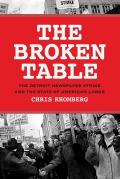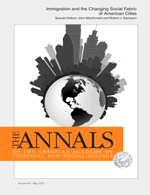 Daniel M. Goldstein is Associate Professor and Graduate Program Director in the Department of Anthropology at Rutgers University. He studies the global meanings and practices of security and securitization, particularly as these come into conflict with human rights.
Daniel M. Goldstein is Associate Professor and Graduate Program Director in the Department of Anthropology at Rutgers University. He studies the global meanings and practices of security and securitization, particularly as these come into conflict with human rights.
As I write, the United States Supreme Court is debating the constitutionality of Arizona’s SB 1070, the state law that imposes extremely harsh penalties on undocumented immigrants, effectively criminalizing the immigrant presence in the state. Whatever the Court decides, this piece of legislation has already had a broad national impact. In states and municipalities across the U.S., legislators and policy makers have introduced laws and ordinances similar to Arizona’s, making it ever more difficult for the undocumented person to obtain a driver’s license, a job, and a place to live, to educate his or her children, and to move about in public.
This legislative trend is part of the “securitization” of immigration in the U.S. – that is, the rendering of immigration (and specifically Latino immigration) as a threat to the security of the American public and the stability of the American way of life. As immigration has become increasingly securitized in recent years, the principal site of immigration control has shifted from the national borders to the spaces within those borders, and from the federal to the local levels of legislation and enforcement, even as the prototypical security threat has extended from the “Islamic terrorist” to the Latino day laborer. In such a context, it is critical to understand the ways in which increasing securitization at the state and local levels is experienced in daily life, and how that experience shapes the perceptions that Latino immigrants and their non-immigrant neighbors have of their own security and how to ensure it. What does security mean in the context of undocumented immigration in the U.S. today, and what effects do laws meant to guarantee it produce in daily life?
STUDYING SECURITIZATION
A Presidential Authority Award from the Russell Sage Foundation in 2011 allowed me to study the impacts that ordinances like those described above have had on undocumented Latino residents of a small New Jersey town, one of the “new destinations” of migrant settlement in the U.S. My research examines the lived experience of securitized immigration, focusing on the ways in which undocumented migrants respond to the increasingly restrictive legal environment within which they must build their lives. As a cultural anthropologist, I rely on a qualitative research methodology grounded in long-term participant-observation in the study community and intensive individual and group interviewing to collect data on local life. This research brings a much-needed ethnographic perspective to the study of immigration and its impacts on local communities in the U.S. Whereas much research on immigration has tended to focus on macro-level policies and politics using surveys and other quantitative methodologies, the ethnographic approach relies on direct personal interactions between ethnographer and research subjects to highlight the daily experience of life in a particular study location. This research site is not understood as a bounded isolate, but rather must be situated within the broader sociocultural, political, and economic context of a wider region, nation, and world. In trying to understand how securitization operates in one town – a place I call, pseudonymously, Hometown, NJ – my intention is not to generalize to all immigrant communities, but to analyze people’s experiences, in depth and detail, in one particular location. By doing so, I hope to suggest the complex and contradictory ways in which anti-immigrant laws can shape local realities.
 Editor's Note: Diana T. Sanchez and Julie A. Garcia are contributors to RSF's volume Facing Social Class: How Societal Rank Influences Interaction. As part of our forum on social class in America, they discuss their research below on the interaction between socioeconomic status and racial categorization.
Editor's Note: Diana T. Sanchez and Julie A. Garcia are contributors to RSF's volume Facing Social Class: How Societal Rank Influences Interaction. As part of our forum on social class in America, they discuss their research below on the interaction between socioeconomic status and racial categorization.



 The available research on the death penalty cannot be used by policymakers to determine if capital punishment deters, increases, or has no effect on the nation's homicide rate, according to a
The available research on the death penalty cannot be used by policymakers to determine if capital punishment deters, increases, or has no effect on the nation's homicide rate, according to a  The latest issue of the
The latest issue of the  Why do so many Americans receive such a big tax refund? Every year, the IRS sends a check of around $3,000 to Americans who paid more taxes than they should. The excess withholding is a puzzle: why do consumers prefer to give the U.S. government an interest-free loan? Wouldn't a quick trip to the payroll administrator be worth the effort if it meant a bigger paycheck? Michael Barr, an editor of the RSF volume
Why do so many Americans receive such a big tax refund? Every year, the IRS sends a check of around $3,000 to Americans who paid more taxes than they should. The excess withholding is a puzzle: why do consumers prefer to give the U.S. government an interest-free loan? Wouldn't a quick trip to the payroll administrator be worth the effort if it meant a bigger paycheck? Michael Barr, an editor of the RSF volume